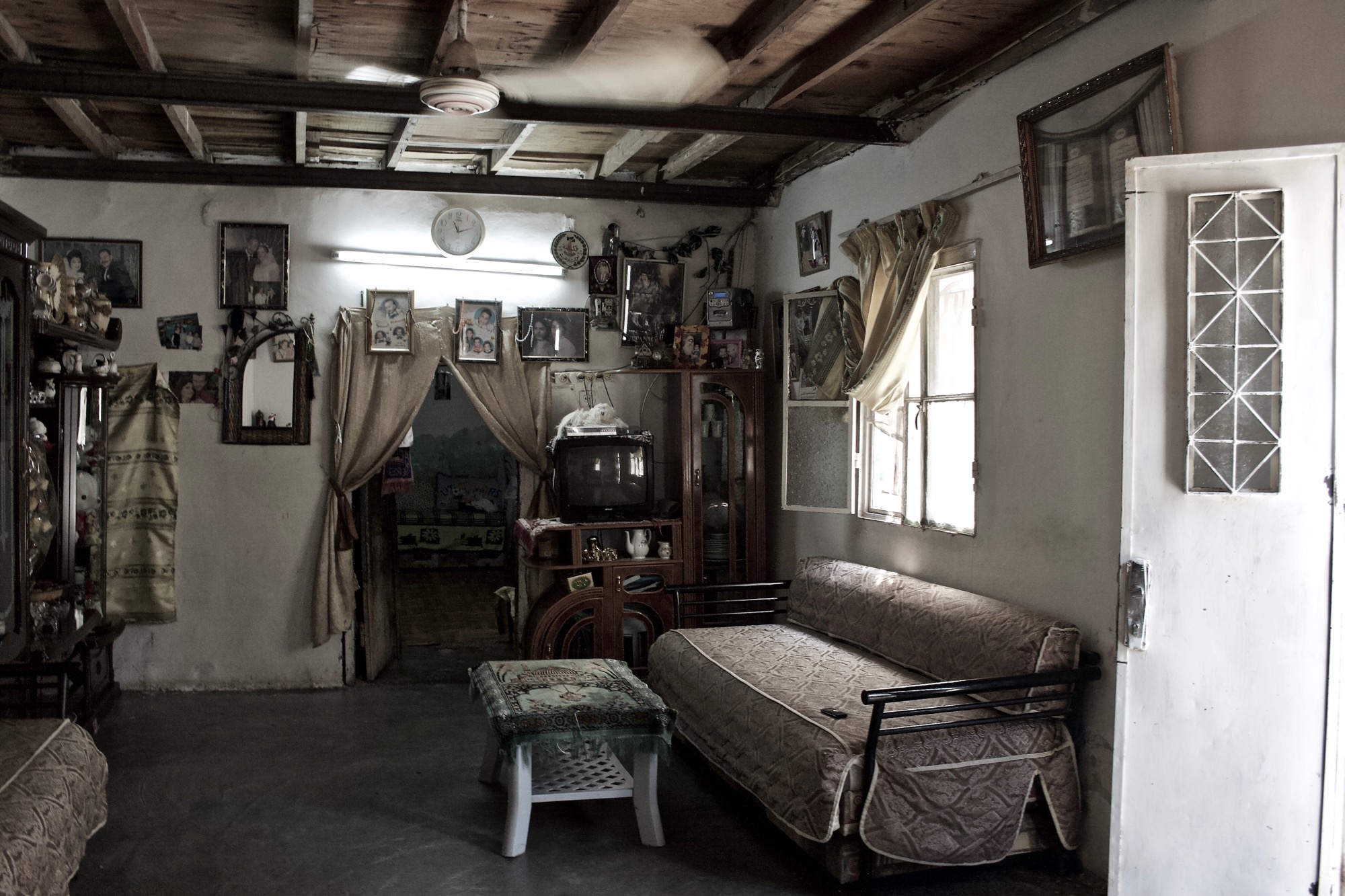Interiors
Interiors: Semiotics of walls
It is within the interiors of home, the ways in which its living room and walls are decorated and adorned, that expressions of individuality, subjectivities, desires, class and belief systems come true. They are the markers that signify the shift from house to home, from the material to the immaterial, from the physical to the metaphysical. Images that adorn walls are not meaningless objects. They contribute to feeling ‘homey,’ comfortable and at ease.
In Palestinian homes two recurring motifs are found: national and religious. Images of the Dome of the Rock, the map of Palestine, Koranic verses or Mecca’s tapestry are must-have items, if not all of them, then one or two of them. While the Dome of the Rock embodies both the national and the religious, for Palestinian Jerusalemites, especially those who endured displacement as a result of home demolition or settler takeover, it encapsulates all what Jerusalem means for them: the spiritual, the mundane, and the political. It represents Jerusalem the home city, the site of their everyday life, their social safety net, their recreation, their religious practices, and their firm and unwavering sense of belonging and right to the city.
Displaced Palestinians who lost their homes could not recreate the sense of home they once had. Although the houses they moved to are more spacious they feel claustrophobic. Apart from the map of Palestine, the Dome of the Rock, or Koranic verses, their walls are barren. Unsettling feelings of alienation, isolation and loss run deep.
























